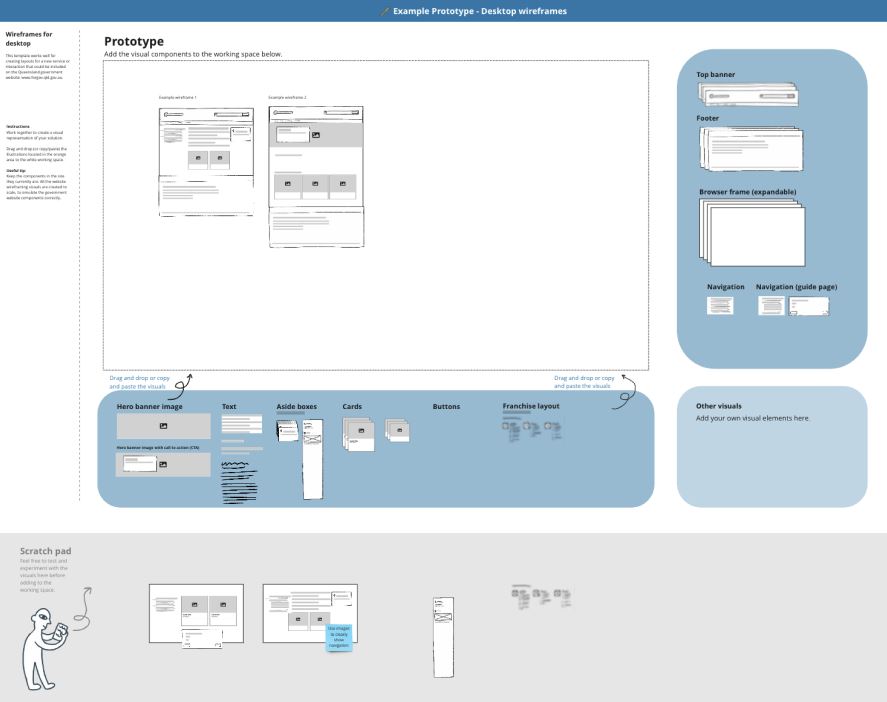Prototyping (low fidelity)
A prototype is a draft version of a product or service that allows you to explore and test your ideas with customers so that you can learn important customer insights and improve your solution quickly before the real build.
A prototype can be anything from paper drawings (low-fidelity) to something that allows click-through of a few pieces of content to a fully functioning site (high-fidelity). A play that covers high-fidelity prototyping will be added to the playbook soon.
Some of the purposes that prototypes fulfil are:
- Exploring and experimentation: You can use prototypes to explore problems, ideas, and opportunities within a specific area of focus and test out the impact of small or large changes.
- Learning and understanding: Use prototypes to better understand a problem, product, or system.
- Testing and engaging: Use prototyping to engage with users or stakeholders in ways that uncover insights that could inform design decisions going forward.
- Inspiring: Use prototypes to sell new ideas, motivate buy-in from internal or external stakeholders, or inspire markets toward radical new ways of thinking and doing.
This play is based on low-fidelity (low-fi) prototyping methods. Low-fi prototyping has many benefits, including:
- It helps create a solid foundation for an idea and gives stakeholders a clear picture of the potential benefits.
- You can test early design ideas with users at a very low cost. Doing so lets you fix usability problems before you waste time and money implementing something that doesn't work.
- You will improve project timelines by testing out ideas early in a project, and minimise the number of errors to correct before service release.
- Low-fi prototypes are a minor investment and clearly created to be replaced with a much more refined outcome. This makes it easier for users to suggest changes.
- It's easy for anyone to do, you generally don't need special skills or equipment.

Outcomes
- A visual or physical representation that can be communicated with various stakeholders for a shared understanding around project direction.
- A prototype that can be tested and iterated quickly to reflect user needs.
The stages

The four stages of the Service design and delivery process are Discovery, Alpha, Beta, and Live.
Digital service standard
This play helps your service meet the following criteria of the digital service standard.
Share your feedback
Take our short feedback survey and tell us what you thought of this play, or report an issue.
This playbook is a beta product, your feedback helps us improve it for everyone.
Contact us
If you need advice, mentoring, or guidance on how to use the playbook, or you’d like to contribute to the playbook, you can contact us.